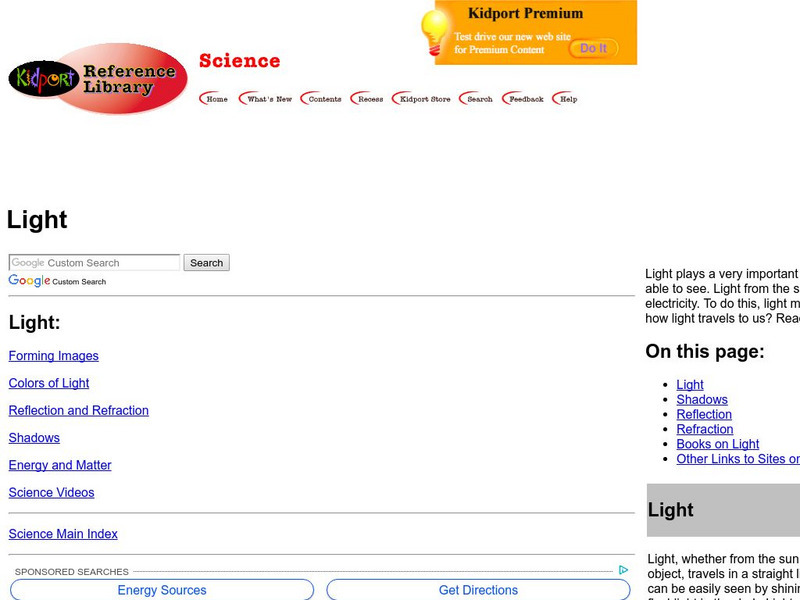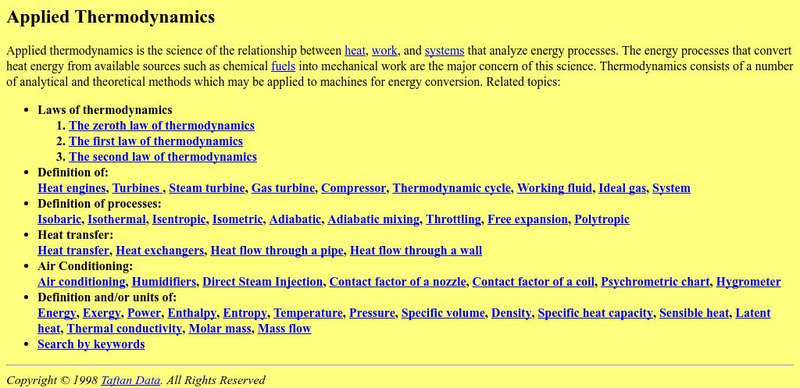American Museum of Natural History
What is the Greenhouse Effect?
Without the greenhouse effect, Earth would not be inhabitable. A thorough online resource describes the greenhouse effect and how it occurs. The source highlights the different types of gases that work together to absorb the sun's...
American Museum of Natural History
Climate Change
It actually is possible to have too much of a good thing when it comes to climate change. A slide show lesson describes how burning fossil fuels contributes to climate change. Individuals read about the scientific process and the...
American Museum of Natural History
They Glow!
Would you believe marine animals can make their own light? An online resource describes the process of bioluminescence and how animals in the ocean use it to survive. The lesson features a catchy tune that describes the behavior of ocean...
American Museum of Natural History
Journey to the Stars
Fifteen detailed pictures and informative captions delve deep into the exploration of stars—their life cycle and importance in the universe.
Science Buddies
Science Buddies: Burning Biofuels: Comparing Nonrenewable and Renewable Fuels
Will using agrofuel offer a substantial alternative to using fossil fuel? With this experiment you can compare the amount of heat energy released by agrofuel and fossil fuel. The Science Buddies project ideas are set up consistently...
Ducksters
Ducksters: Physics for Kids: Energy
Kids learn about the science behind Energy including its different forms such as chemical, electrical, heat, and gravitational. When is energy considered renewable or nonrenewable?
Khan Academy
Khan Academy: Heat and Temperature
An explanation of using heat capacity to calculate heat.
Ducksters
Ducksters: Environment for Kids: Geothermal Energy
Kids learn about geothermal energy and how this renewable power can help the environment. Teach students about heat pumps and electric plants.
Ducksters
Ducksters: Environment for Kids: Solar Energy
Kids learn about solar energy and how this renewable power can help the environment. Teach students about solar cells and using the sun for heat.
FT Exploring
Ft Exploring: Science and Technology Education
A very comprehensive site for teachers and students. Topics include bugs, energy, bones, animals, photosynthesis, energy, and technology.
Other
Energy Resources: Geothermal Power
This site was put together by a science teacher and provides a very nice introduction to how geothermal powered energy resources may be used. Discusses advantages and disadvantages.
Kidport
Kidport: Light
Did you know that light is a form of energy and always travels in a straight line? Discover some more interesting facts about light.
Extreme Science
Extreme Science: All About the Sun
Read about the sun, the source of its energy, solar activity, sunrise/sunset times, solar flares, and other interesting facts.
Other
Taftan: Applied Thermodynamics
A definition of applied thermodynamics, the science of the relationship between heat, work, and systems that analyze energy processes. Related links.
University Corporation for Atmospheric Research
Ucar: Introduction to the Atmosphere
A detailed overview of the Earth's atmosphere, with explanations about atmospheric properties, the structure of the atmosphere, its four layers, atmospheric processes, energy heat transfer, conduction and convection, and radiation. All...














